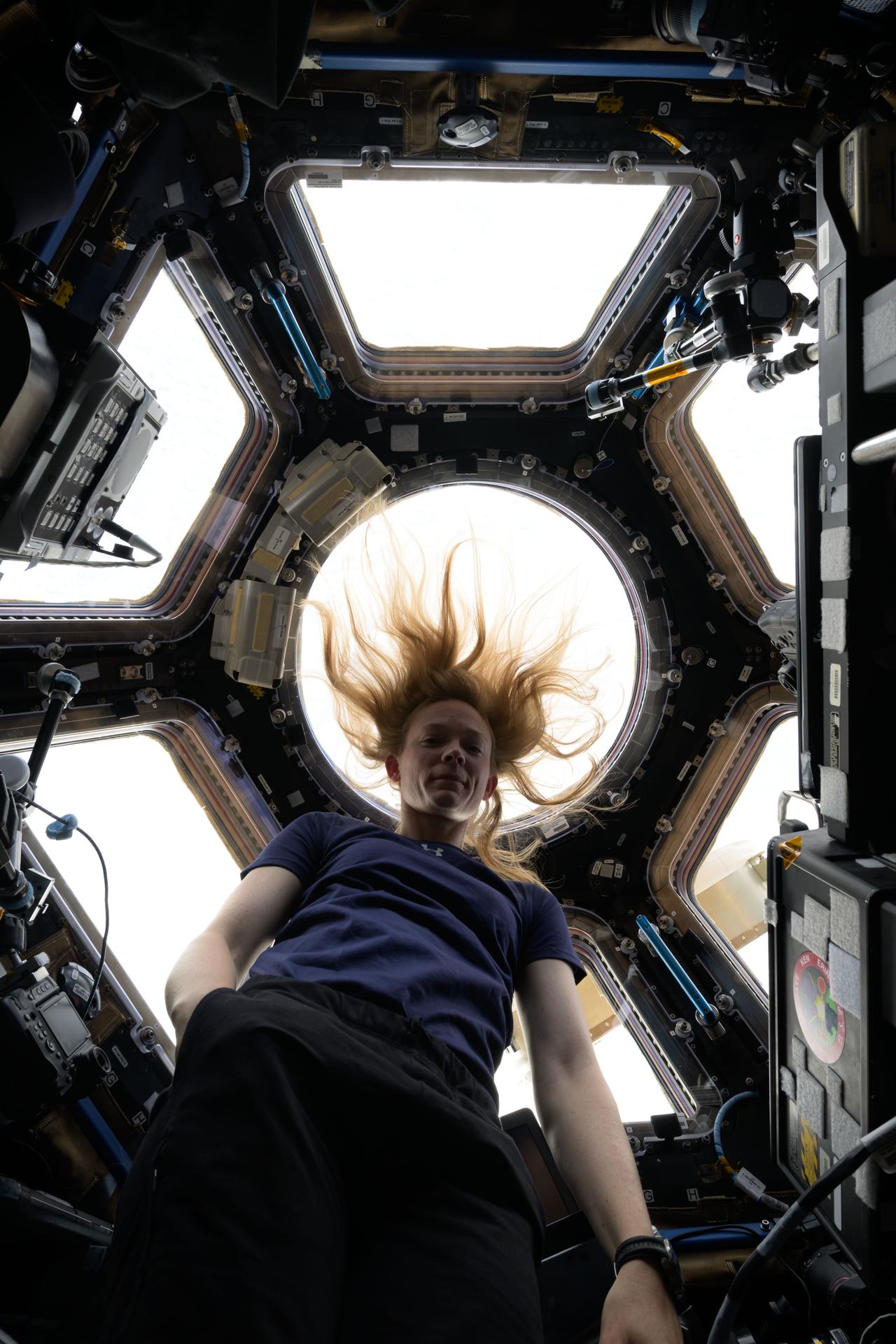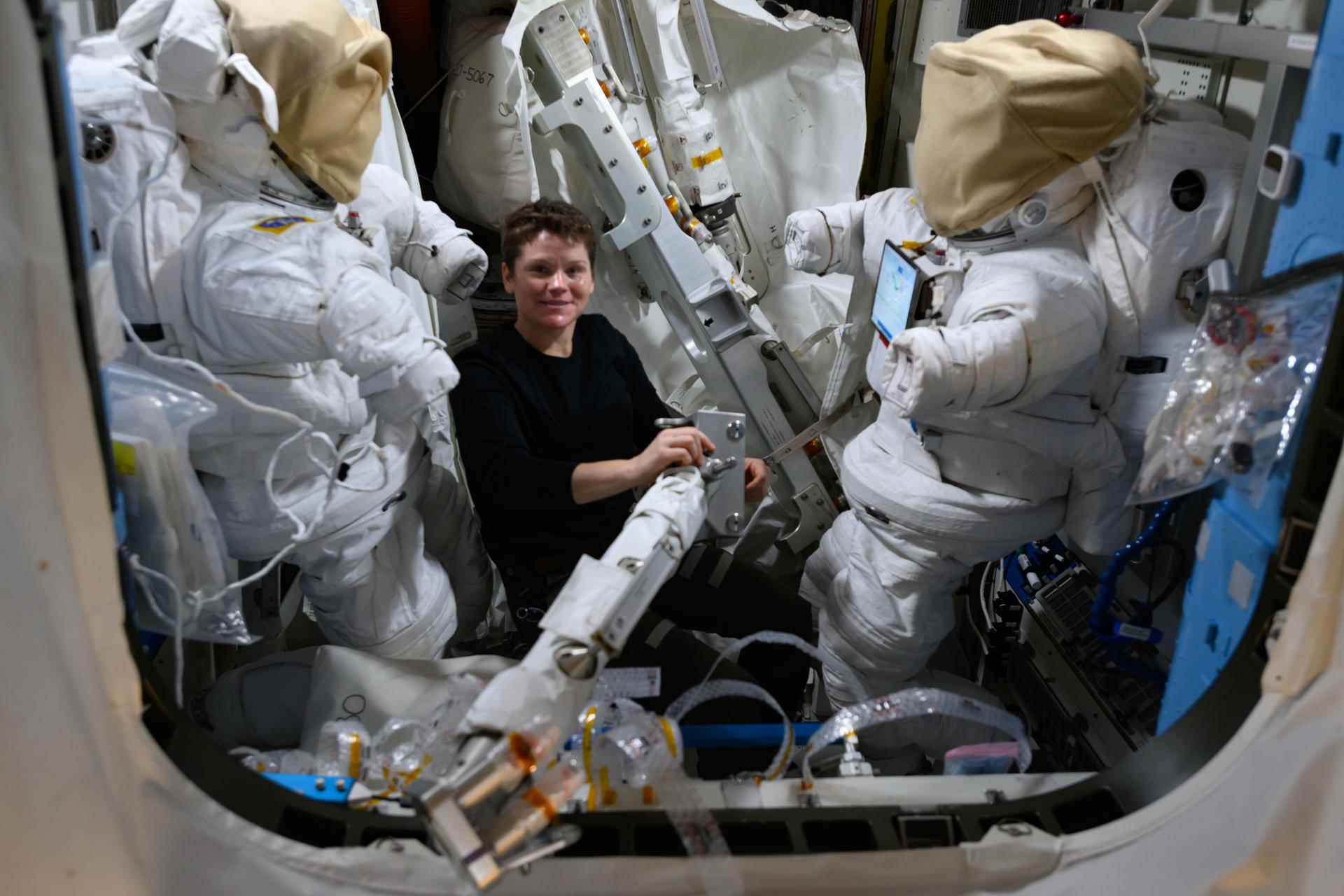Crew Swaps Command on Friday Before Soyuz Departure and Dragon Launch
Expedition 72 will come to an end and segue into the Expedition 73 mission after three veteran crewmembers depart the International Space Station on Saturday. Meanwhile, the orbital residents stayed busy on Thursday with cargo mission preparations, spacesuit checks, and microgravity research.
Station Commander Alexey Ovchinin of Roscosmos will hand over command of the orbital laboratory to JAXA (Japan Aerospace Exploration Agency) astronaut Takuya Onishi at 2:40 p.m. EDT on Friday. Afterward, Ovchinin will turn his attention to returning to Earth with Flight Engineers Don Pettit of NASA and Ivan Vagner of Roscosmos after 220 days in space. The trio will undock in their Soyuz MS-26 spacecraft from the Rassvet module at 5:57 p.m. EDT on Saturday ending Expedition 72 then parachute to a landing in Kazakhstan at 8:20 p.m. the same day (6:20 a.m. on Sunday, April 20, in Kazakhstan) on Pettit’s 70th birthday. NASA+ will broadcast Saturday’s crew farewell, undocking, and landing activities live beginning at 2 p.m.
Onishi will stay onboard the space station leading Expedition 73 and orbiting Earth until July. Remaining with Onishi will be NASA astronauts Anne McClain, Nichole Ayers, and Jonny Kim, and Roscosmos cosmonauts Sergey Ryzhikov, Alexey Zubritsky, and Kirill Pskov.
Onishi and Kim will be on duty early next week monitoring the automated approach and rendezvous of the SpaceX Dragon cargo craft carrying about 6,700 pounds of science and supplies for the orbital residents. Dragon will launch at 4:15 a.m. EDT on Monday, April 21, from NASA’s Kennedy Space Center and dock at 8:20 a.m. the following day to the Harmony module’s space-facing port for a month long cargo mission. The duo continued training on Thursday for Dragon’s arrival reviewing spacecraft monitoring techniques on a computer.
Kim began his Thursday shift studying how McClain‘s sense of balance is adapting to microgravity as she wore virtual reality goggles for the CIPHER human research investigation. Afterward, Kim examined the retina, optic nerve, and cornea of his crew mates Ayers and Onishi using medical imaging hardware.
McClain and Ayers are due to exit the orbital outpost on May 1 for a six-and-a-half-hour spacewalk. The duo will prepare the port side truss structure for a new rollout solar array and relocate an antenna that communicates with commercial spacecraft at the station. Pettit spent Thursday preparing their spacesuits, cleaning the cooling loops, and inspecting suit components. Later, Kim and Onishi practiced installing jetpacks on the spacesuits that would be used to maneuver back to safety in the unlikely event a spacewalker became untethered from the space station.
Ryzhikov and Zubritsky are settling in for a seven-and-a-half-month space research mission and beginning to pick up Ovchinin’s and Vagner’s crew responsibilities. The cosmonauts also attached sensors to themselves and studied how a long duration spaceflight affects the respiratory system. Flight Engineer Kirill Peskov wrapped up a research session with the departing Vagner as they tested the lower body negative pressure suit that may help a crew member returning to Earth adjust quicker to gravity.
Learn more about station activities by following the space station blog, @space_station and @ISS_Research on X, as well as the ISS Facebook and ISS Instagram accounts.
Get the latest from NASA delivered every week. Subscribe here: https://www.nasa.gov/subscribe
Powered by WPeMatico
Mark A. Garcia








